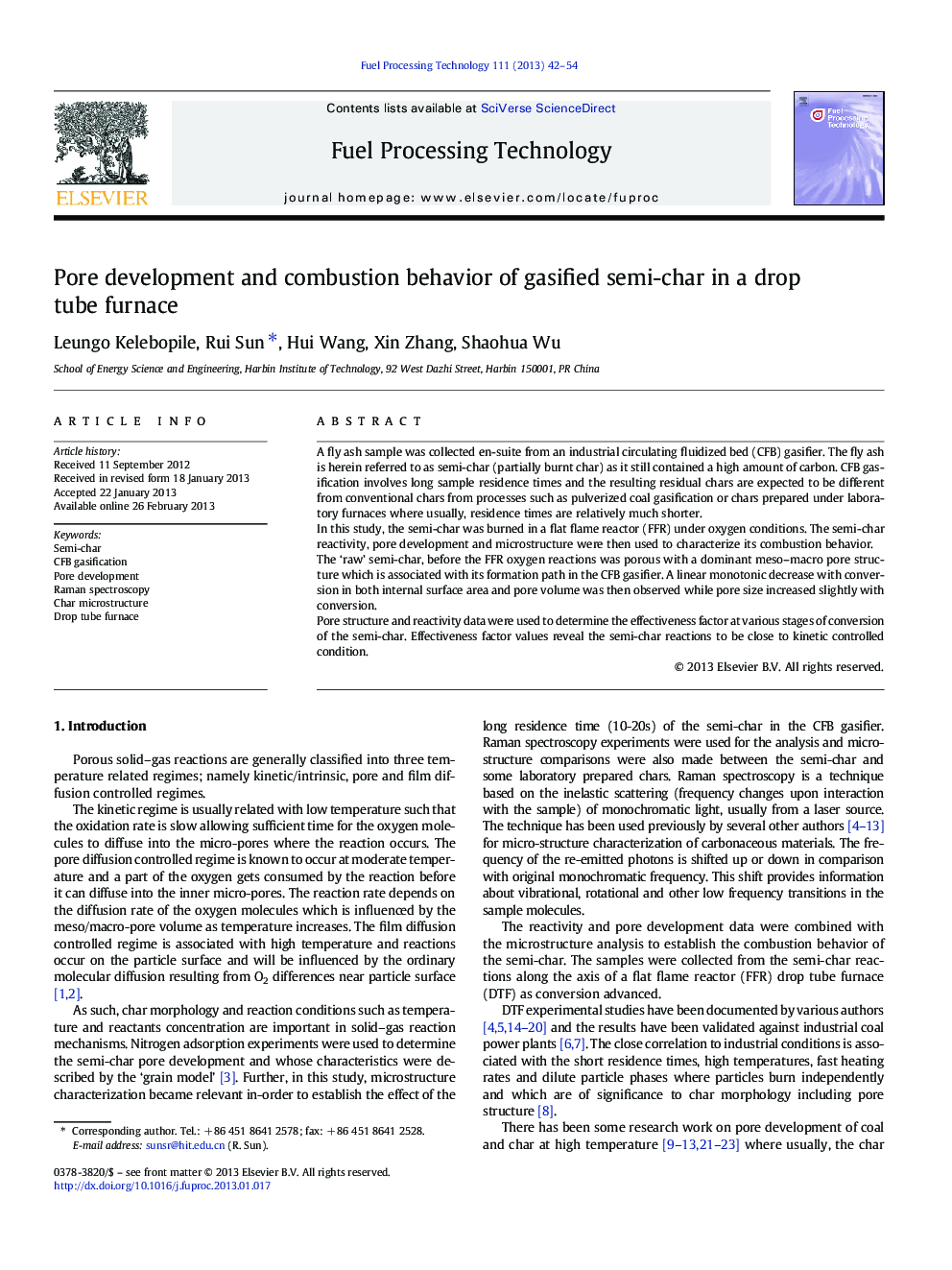| Article ID | Journal | Published Year | Pages | File Type |
|---|---|---|---|---|
| 209914 | Fuel Processing Technology | 2013 | 13 Pages |
A fly ash sample was collected en-suite from an industrial circulating fluidized bed (CFB) gasifier. The fly ash is herein referred to as semi-char (partially burnt char) as it still contained a high amount of carbon. CFB gasification involves long sample residence times and the resulting residual chars are expected to be different from conventional chars from processes such as pulverized coal gasification or chars prepared under laboratory furnaces where usually, residence times are relatively much shorter.In this study, the semi-char was burned in a flat flame reactor (FFR) under oxygen conditions. The semi-char reactivity, pore development and microstructure were then used to characterize its combustion behavior.The ‘raw’ semi-char, before the FFR oxygen reactions was porous with a dominant meso–macro pore structure which is associated with its formation path in the CFB gasifier. A linear monotonic decrease with conversion in both internal surface area and pore volume was then observed while pore size increased slightly with conversion.Pore structure and reactivity data were used to determine the effectiveness factor at various stages of conversion of the semi-char. Effectiveness factor values reveal the semi-char reactions to be close to kinetic controlled condition.
► Research is on combustion of semi-char sampled from CFB gasifier. ► The semi-char is porous with predominant meso/macro pores. ► The loss of micro-porosity must have been accompanied with structure reorganization. ► Pore structure is related mainly to conversion and independent of other factors. ► Reactions occur to inside of particle at high temperature and oxygen concentrations.
